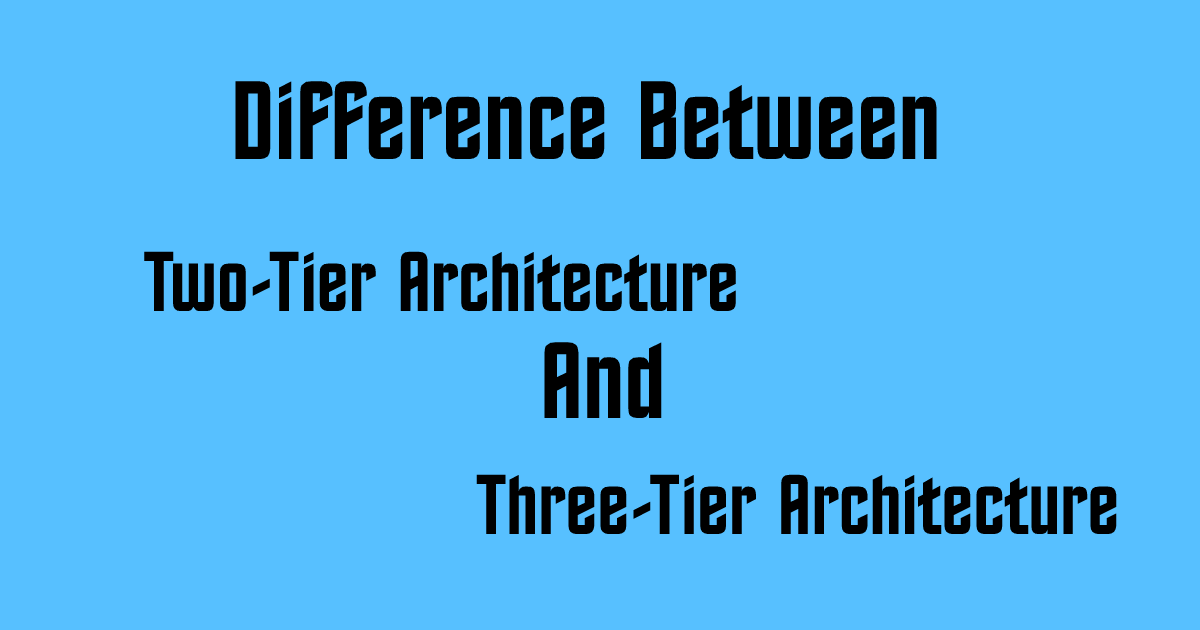Difference Between Two-Tier And Three-Tier Database Architecture

Two-tier and three-tier database architectures are models used to design the structure of database systems and how they interact with applications.
Here are the key differences between the two:
Two-Tier Database Architecture:
-
Components:
- Client and Database Server: In a two-tier architecture, there are two main components: the client (user interface or application) and the database server.
-
Communication:
- Direct Communication: The client communicates directly with the database server. The client is responsible for handling the presentation layer and business logic.
-
Responsibilities:
- Client-Side Logic: The client is responsible for executing both the presentation logic (user interface) and business logic. This means that a significant portion of the application logic resides on the client side.
-
Scalability and Maintenance:
- Challenges in Scalability: Scaling and maintaining a two-tier architecture can be challenging, especially as the application grows. Changes in business logic or user interface may require modifications on the client side.
-
Examples:
- Traditional Client-Server Applications: Many traditional client-server applications, where the client interacts directly with the database server, follow a two-tier architecture.
Three-Tier Database Architecture:
-
Components:
- Presentation, Application, and Database Server: In a three-tier architecture, there are three main components: the presentation layer (client), the application layer (business logic), and the database layer.
-
Communication:
- Indirect Communication: The client communicates with the application server, and the application server, in turn, communicates with the database server. The application server acts as an intermediary.
-
Responsibilities:
- Clear Separation of Concerns: The presentation layer is responsible for the user interface, the application layer handles business logic, and the database layer manages data storage and retrieval. This separation of concerns makes the system more modular and maintainable.
-
Scalability and Maintenance:
- Improved Scalability: Three-tier architectures are generally more scalable and maintainable than two-tier architectures. Changes in business logic can be implemented on the application server without affecting the client.
-
Examples:
- Web-based Applications: Many modern web applications use a three-tier architecture. The client (web browser) interacts with a web server (presentation layer), which communicates with an application server (business logic), and the application server interacts with a database server.
Advantages of Three-Tier Architecture:
-
Modularity: Clear separation of presentation, application, and database layers allows for easier maintenance and updates.
-
Scalability: The application server acts as an intermediary, making it easier to scale the system horizontally by adding more servers.
-
Security: Sensible security measures can be implemented at each layer, enhancing overall system security.
-
Flexibility: Changes to business logic or data storage do not necessarily require changes on the client side, making the system more flexible.
In summary, while a two-tier architecture involves direct communication between the client and the database server, a three-tier architecture introduces an additional application server layer, providing better modularity, scalability, and maintenance capabilities.
Thank you.
